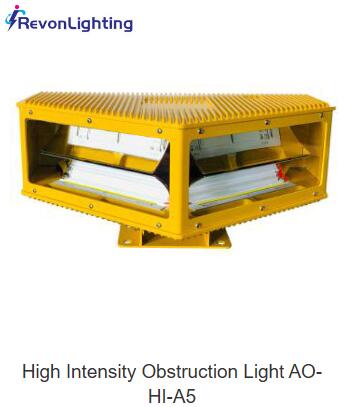Chimneys and smokestacks are tall structures that are commonly found in industrial settings and power plants. These structures can pose potential hazards to low-flying aircraft. To ensure aviation safety, chimney aviation warning lights play a vital role in marking these structures and enhancing their visibility. This article will explore the importance, types, benefits, and advancements of chimney aviation warning lights in promoting aviation safety.
Importance of Chimney Aviation Warning Lights: Chimney aviation warning lights are essential for alerting pilots to the presence of tall structures such as chimneys and smokestacks. These lights serve as a visual cue, enabling pilots to identify potential obstacles and navigate safely. They are especially crucial during low visibility conditions such as fog or darkness, reducing the risk of collisions.

Types of Chimney Aviation Warning Lights: There are different types of chimney aviation warning lights available, depending on the height and regulations of the structure.
Red Obstruction Lights: These lights are commonly used for chimneys taller than 200 feet and emit a steady red light. They are usually installed at the top and sides of the chimney, providing 360-degree visibility.
Medium Intensity White Obstruction Lights: These lights are used for structures between 150 and 200 feet tall and emit a medium intensity white light. They are less bright than red obstruction lights but still provide sufficient visibility during daylight and twilight hours.
Low Intensity Obstruction Lights: These lights are used for structures below 150 feet and emit a low-intensity white light. They are typically installed on structures that may pose a hazard to low-flying aircraft, such as powerlines and telecommunication towers.
| chimney aviation warning lights | low intensity |
| 120deg | medium intensity light |
| high intensity lights |
Benefits of Chimney Aviation Warning Lights:
Enhanced Visibility: Chimney aviation warning lights improve the visibility of tall structures, allowing pilots to identify potential hazards from a distance. This visibility is crucial, especially during low visibility conditions, preventing accidents and ensuring safe navigation.
Compliance with Aviation Regulations: Aviation authorities worldwide have established regulations regarding the use of obstruction lights for tall structures. By installing and maintaining these lights, organizations ensure compliance with these regulations, avoiding penalties and legal consequences.
Cost-Effectiveness: Many chimney aviation warning lights are now equipped with energy-efficient LED technology, reducing power consumption and maintenance costs. Additionally, advancements in solar-powered obstruction lights have eliminated the need for traditional electrical connections, making them more cost-effective and environmentally friendly.
Advancements in Chimney Aviation Warning Lights: The field of aviation safety is continuously evolving, and advancements in technology are also influencing the development of chimney aviation warning lights. Some potential future advancements include:
Smart Obstruction Lights: Integration of advanced sensors and communication systems can enable obstruction lights to gather real-time data, such as weather conditions, visibility range, and aircraft movement. This information can be used to optimize the operation of obstruction lights, ensuring maximum efficiency and safety.
Improved Energy Efficiency: Ongoing research aims to enhance the energy efficiency of obstruction lights by developing more efficient solar panels and optimizing power storage solutions. This will further reduce energy consumption and reliance on traditional power sources.
Integration with Air Traffic Management Systems: The integration of obstruction lights with air traffic management systems can enhance situational awareness for pilots and air traffic controllers. Real-time data exchange between these systems can provide more accurate information on obstacle locations, allowing for better navigation and traffic management.
Conclusion: Chimney aviation warning lights are integral to promoting safety in the aviation industry. By marking tall structures such as chimneys and smokestacks, these lights provide a clear visual warning to pilots, enabling them to navigate safely and avoid potential hazards. With advancements in technology, such as smart systems and improved energy efficiency, chimney aviation warning lights will continue to play a crucial role in enhancing aviation safety in the future. As the industry prioritizes safety, the implementation of effective lighting solutions will remain a vital aspect of maintaining a safe and efficient aviation environment.